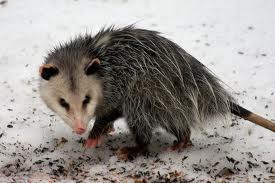I want to declare the need for more quirkiness in 2013 with more quirky knitting and more quirky knitting topics. And I can't think of anything much more quirky than possum yarn; can you?
Before you leave, give me a minute to explain. The opossum those of us from North America are most familiar with is not the creature that creates possum yarn. An opossum is a North American phenomenon remotely related to the possums found in Australia and New Zealand. In fact if you really want to know the nitty gritty about the differences between an opossum and a possum click here. There may be more detail than you want, but I know some of you enjoy thoroughly understanding such things.
Before you leave, give me a minute to explain. The opossum those of us from North America are most familiar with is not the creature that creates possum yarn. An opossum is a North American phenomenon remotely related to the possums found in Australia and New Zealand. In fact if you really want to know the nitty gritty about the differences between an opossum and a possum click here. There may be more detail than you want, but I know some of you enjoy thoroughly understanding such things.
 |
| An Opossum |
 |
| An Opossum with the kids on board |
 |
| A Possum |
 |
| Possum with kid on board |
So over the last 150 years this fur industry turned into a highly specialized wool industry instead. Just to show you, possum hair is hollow so it is relatively weather resistant and warm. When New Zealand possum fur is blended with merino wool it becomes luxurious, warm, soft, anti-static and a luxury that nearly everyone can afford. Should you knit with it you are using a truly versatile and extremely warm natural fibre that will last years.
 |
| See how hollow the fur it |
Knitters who travel to New Zealand often come home with this specialized yarn because it offers a very unique reminder of their visit. (Possum yarn is available in North American but tends to be quite expensive here.)
I know there are those who are uncomfortable regarding the use of fur or wool that seem so unconventional. Certainly the loveableness of a sheep is different from that of a possum. But see what a regular sheep looks like in the wild. See all that straw and dirt mixed in with the wool?
This wool really needs to be cleaned before anyone would knit with it. I'm a farm girl who has no issue with things like possum wool. It is no better or worse that sheep's wool in my book. So if you get a chance, check out possum wool. It has the potential to become one of your new favorites.



i have socks with merino wool, they are great!
ReplyDelete